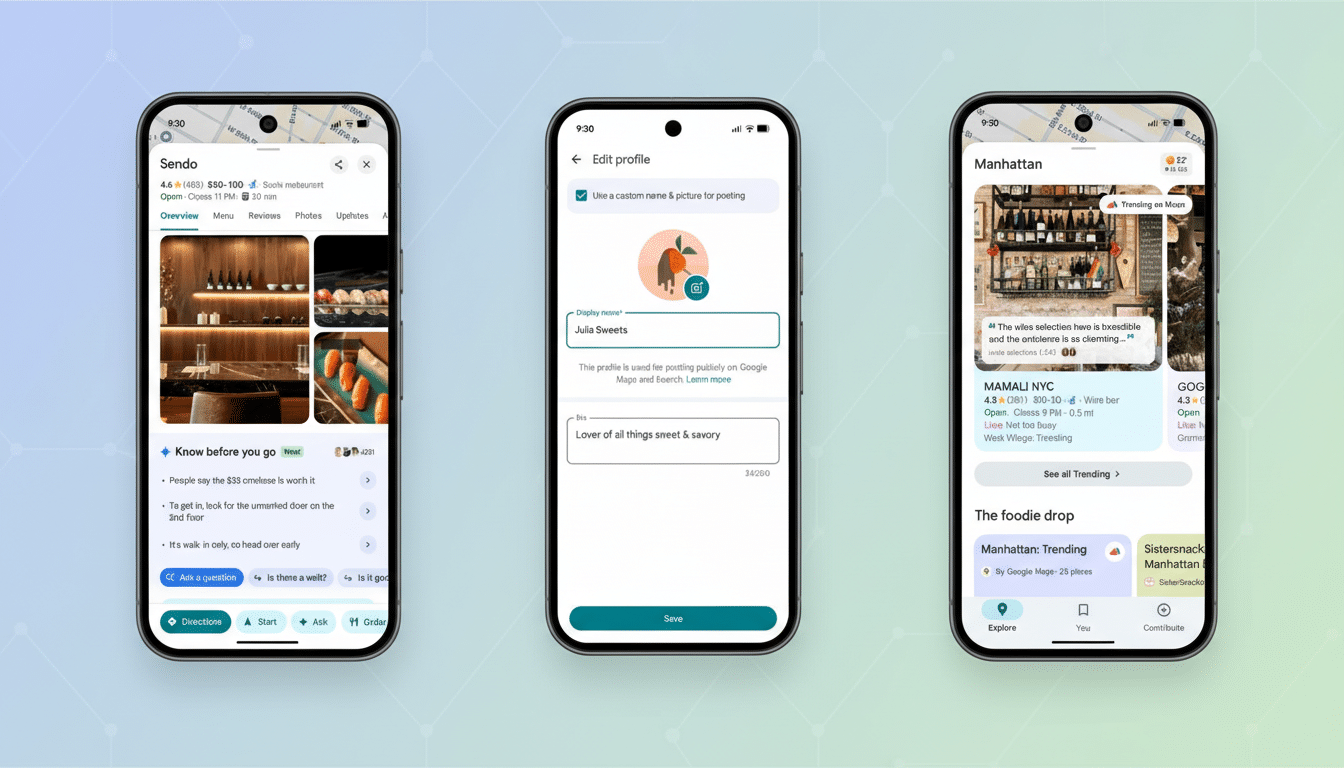Google is adding a new layer of trip preparation to Maps: The company is pulling in travel information from across the web and combining it into a “Know Before You Go” feature that spits out everything you’d need to know before you step onto an airplane. As opposed to the generic review summaries of others, these cards are trying to tell you what you actually need to know when it comes down to it: where to park, if there’s a cover charge, or if it’s cash-only (or dog-friendly).
What do we mean by ‘Know Before You Go’ tips
Those tips present themselves as pithy, scannable summaries that can be found on place pages for restaurants, locations, and attractions. The hope is to glean the hard-won wisdom you might previously have unearthed mid-visit — say, a concert hall’s bag policy or a quiet entrance favored by locals — and bring it forward in the process of planning. It’s sort of like Maps’ current reviews and Popular Times data, but condensed into takeaways you can actually act on immediately.
- What do we mean by ‘Know Before You Go’ tips
- Where the new Google Maps ‘Know Before You Go’ tips come from
- Early results and what to expect from Google’s new tips
- Where to find the new ‘Know Before You Go’ tips in Maps
- Real-world scenarios for ‘Know Before You Go’ tips
- Related update: power-saving navigation mode on Pixel 10
- The bottom line: what these new Google Maps tips mean

Google’s recent AI updates for Maps draw from its Gemini models, which have been fine-tuned to learn to pick out patterns across diverse inputs and pull out the details most likely to impact your driving experience. In its early use, you might get suggestions about reservations, children’s seating preferences, avoiding hidden wait times, or transit quirks around major sports facilities on nights when your home team is playing.
Where the new Google Maps ‘Know Before You Go’ tips come from
Google doesn’t share every signal, but the listings are a combination of user reviews, owner-supplied updates, photos, Q&A threads, and structured attributes along with tips from Local Guides. Google has said before that its Maps service holds information on some 250 million locations, and that more than 20 million contributions are made to it each day by users and businesses — a rich corpus for the AI to tap for hyper-specific advice.
(Key) word count. What’s crucial is not just counting words. The models sniff around for instructions and constraints — the “bring cash,” “use the south entrance,” or “free parking after 6” nuggets — and arrange them into clean, context-aware notes. The effect should be more like a friend filling you in quickly before you go out and less like marketing.
Early results and what to expect from Google’s new tips
This will be uneven in early rollout. Destinations with lots of recent reviews and plenty of input from owners will result in richer, more nuanced tips, while scant listings might be tipped toward broader overviews. And expect the system to become more fine-tuned as additional signals come in from users and as Maps’ AI learns which tips actually do help users — measured via taps, saved destinations, and less backtracking during turns on navigation instructions.
Accuracy guardrails are paramount. Google has been investing in spam detection and abuse prevention for years, and it’s probably doing something similar here to try to discourage outdated or misleading advice. But travelers should consider these cards, for now, as a head start rather than a sure bet, and cross-check details like event policies or pop-up menus when the stakes are high.

Where to find the new ‘Know Before You Go’ tips in Maps
Go to a place page on Google Maps for Android or iOS and scroll through the overview. Where it is available, “Know Before You Go” will now be displayed as a dedicated card featuring brief and succinct information. If you want to check a detail, or see recent changes, chances are good that you can drill down into related sections — such as “Reviews,” “Photos,” or “Q&A” — for the context underneath.
The feature is actually being enabled via a server-side update, so not everything listed will show it today. Coverage should continue to grow in coming days, with high-traffic urban locations and popular dining spots usually first to light up.
Real-world scenarios for ‘Know Before You Go’ tips
Prior to a concert, you might be issued instructions to choose one metro entrance over another in order to avoid long lines, or reminded that only small bags are security-approved. For a casual neighborhood eatery, tips might indicate a cash-only policy, an off-menu dish the locals know to order, or a patio that’s packed by six. For attractions, this may involve nudging you toward stroller access, the prime window for finding shade, or a ticket counter that closes before the gates.
Related update: power-saving navigation mode on Pixel 10
Users on Pixel 10 devices are also starting to see a new minimalist, monochrome navigation mode along with the tips. Intended to reduce visual clutter and save on data usage, Google says it can lengthen navigation time by up to four hours on long car rides. It’s an independent upgrade, yes, but in concert with “Know Before You Go” it makes a Maps push not just toward smarter prep but longer-lasting guidance.
The bottom line: what these new Google Maps tips mean
“Know Before You Go” is a small interface tweak with outsized EQ — fewer rude surprises, smoother arrivals, and some better choices in those crucial few seconds that matter most. But early murmurs suggest that as the rollout expands and AI guzzles down more easy dodges, these tips will go from being handy footnotes to something closer to your playbook before every ****ing outing.

